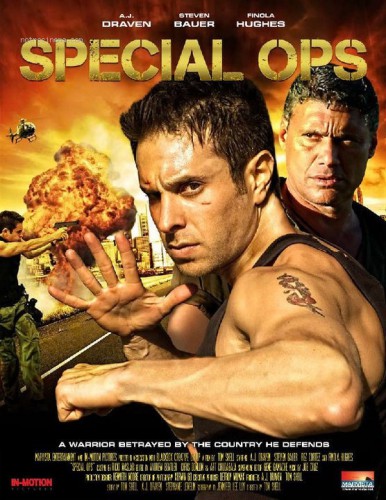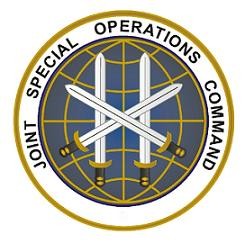Click here to see a larger version

U.S. Special Operations Forces around the world, 2012-2013 (key below article) ©2014 TomDispatch ©Google
I started with a blank map that quickly turned into a global pincushion. It didn’t take long before every continent but Antarctica was bristling with markers indicating special operations forces’ missions, deployments, and interactions with foreign military forces in 2012-2013. With that, the true size and scope of the U.S. military’s secret military began to come into focus. It was, to say the least, vast.
A review of open source information reveals that in 2012 and 2013, U.S. Special Operations forces (SOF) were likely deployed to -- or training, advising, or operating with the personnel of -- more than 100 foreign countries. And that’s probably an undercount. In 2011, then-SOCOM spokesman Colonel Tim Nye told TomDispatch that Special Operations personnel were annually sent to 120 countries around the world. They were in, that is, about 60% of the nations on the planet. “We’re deployed in a number of locations,” was as specific as Bockholt would ever get when I talked to him in the waning days of 2013. And when SOCOM did finally get back to me with an eleventh hour answer, the number offered made almost no sense.
Despite the lack of official cooperation, an analysis by TomDispatch reveals SOCOM to be a command on the make with an already sprawling reach. As Special Operations Command chief Admiral William McRaven put it in SOCOM 2020, his blueprint for the future, it has ambitious aspirations to create “a Global SOF network of like-minded interagency allies and partners.” In other words, in that future now only six years off, it wants to be everywhere.
The Rise of the Military’s Secret Military
Born of a failed 1980 raid to rescue American hostages in Iran (in which eight U.S. service members died), U.S. Special Operations Command was established in 1987. Made up of units from all the service branches, SOCOM is tasked with carrying out Washington’s most specialized and secret missions, including assassinations, counterterrorist raids, special reconnaissance, unconventional warfare, psychological operations, foreign troop training, and weapons of mass destruction counter-proliferation operations.
 In the post-9/11 era, the command has grown steadily. With about 33,000 personnel in 2001, it is reportedly on track to reach 72,000 in 2014. (About half this number are called, in the jargon of the trade, “badged operators” -- SEALs, Rangers, Special Operations Aviators, Green Berets -- while the rest are support personnel.) Funding for the command has also jumped exponentially as SOCOM’s baseline budget tripled from $2.3 billion to $6.9 billion between 2001 and 2013. If you add in supplemental funding, it had actually more than quadrupled to $10.4 billion.
In the post-9/11 era, the command has grown steadily. With about 33,000 personnel in 2001, it is reportedly on track to reach 72,000 in 2014. (About half this number are called, in the jargon of the trade, “badged operators” -- SEALs, Rangers, Special Operations Aviators, Green Berets -- while the rest are support personnel.) Funding for the command has also jumped exponentially as SOCOM’s baseline budget tripled from $2.3 billion to $6.9 billion between 2001 and 2013. If you add in supplemental funding, it had actually more than quadrupled to $10.4 billion.
Not surprisingly, personnel deployments abroad skyrocketed from 4,900 “man-years” -- as the command puts it -- in 2001 to 11,500 in 2013. About 11,000 special operators are now working abroad at any one time and on any given day they are in 70 to 80 countries, though the New York Times reported that, according to statistics provided to them by SOCOM, during one week in March 2013 that number reached 92.
The Global SOF Network
Last year, Admiral McRaven, who previously headed the Joint Special Operations Command, or JSOC -- a clandestine sub-command that specializes in tracking and killing suspected terrorists -- touted his vision for special ops globalization. In a statement to the House Armed Services Committee, he said:
“USSOCOM is enhancing its global network of SOF to support our interagency and international partners in order to gain expanded situational awareness of emerging threats and opportunities. The network enables small, persistent presence in critical locations, and facilitates engagement where necessary or appropriate...”
In translation this means that SOCOM is weaving a complex web of alliances with government agencies at home and militaries abroad to ensure that it’s at the center of every conceivable global hotspot and power center. In fact, Special Operations Command has turned the planet into a giant battlefield, divided into many discrete fronts: the self-explanatory SOCAFRICA; the sub-unified command of U.S. Central Command in the Middle East SOCCENT; the European contingent SOCEUR; SOCKOR, which is devoted strictly to Korea; SOCPAC, which covers the rest of the Asia-Pacific region; and SOCSOUTH, which conducts special ops missions in Central and South America and the Caribbean, as well as the globe-trotting JSOC.
Since 2002, SOCOM has also been authorized to create its own Joint Task Forces, a prerogative normally limited to larger combatant commands like CENTCOM. These include Joint Special Operations Task Force-Philippines, 500-600 personnel dedicated to supporting counterterrorist operations by Filipino allies against insurgent groups like Abu Sayyaf.
A similar mouthful of an entity is the NATO Special Operations Component Command-Afghanistan/Special Operations Joint Task Force-Afghanistan, which conducts operations, according to SOCOM, “to enable the International Security Assistance Force (ISAF), the Afghan National Security Force (ANSF), and the Government of the Islamic Republic of Afghanistan (GIRoA) to provide the Afghan people a secure and stable environment and to prevent insurgent activities from threatening the authority and sovereignty of GIRoA.” Last year, U.S.-allied Afghan President Hamid Karzai had a different assessment of the “U.S. special force stationed in Wardak province,” which he accused of “harassing, annoying, torturing, and even murdering innocent people.”
According to the latest statistics made available by ISAF, from October 2012 through March 2013, U.S. and allied forces were involved in 1,464 special operations in Afghanistan, including 167 with U.S. or coalition forces in the lead and 85 that were unilateral ISAF operations. U.S. Special Operations forces are also involved in everything from mentoring lightly armed local security forces under the Village Stability Operations initiative to the training of heavily armed and well-equipped elite Afghan forces -- one of whose U.S.-trained officers defected to the insurgency in the fall.
In addition to task forces, there are also Special Operations Command Forward (SOC FWD) elements which, according to the military, “shape and coordinate special operations forces security cooperation and engagement in support of theater special operations command, geographic combatant command, and country team goals and objectives.” These light footprint teams -- including SOC FWD Pakistan, SOC FWD Yemen, and SOC FWD Lebanon -- offer training and support to local elite troops in foreign hotspots. In Lebanon, for instance, this has meant counterterrorism training for Lebanese Special Ops forces, as well as assistance to the Lebanese Special Forces School to develop indigenous trainers to mentor other Lebanese military personnel.
Click here to see a larger version

Special Operations Command Central (SOCCENT) briefing slide by Col. Joe Osborne, showing SOC FWD elements
SOCOM’s reach and global ambitions go further still. TomDispatch’s analysis of McRaven’s first two full years in command reveals a tremendous number of overseas operations. In places like Somalia and Libya, elite troops have carried out clandestine commando raids. In others, they have used airpower to hunt, target, and kill suspected militants. Elsewhere, they have waged an information war using online propaganda. And almost everywhere they have been at work building up and forging ever-tighter ties with foreign militaries through training missions and exercises.
“A lot of what we will do as we go forward in this force is build partner capacity,” McRaven said at the Ronald Reagan Library in November, noting that NATO partners as well as allies in the Middle East, Asia, and Latin America “are absolutely essential to how we’re doing business.”
In March 2013, for example, Navy SEALs conducted joint training exercises with Indonesian frogmen. In April and May, U.S. Special Operations personnel joined members of the Malawi Defense Forces for Exercise Epic Guardian. Over three weeks, 1,000 troops engaged in marksmanship, small unit tactics, close quarters combat training, and other activities across three countries -- Djibouti, Malawi, and the Seychelles.
In May, American special operators took part in Spring Storm, the Estonian military’s largest annual training exercise. That same month, members of the Peruvian and U.S. special operations forces engaged in joint training missions aimed at trading tactics and improving their ability to conduct joint operations. In July, Green Berets from the Army’s 20th Special Forces Group spent several weeks in Trinidad and Tobago working with members of that tiny nation’s Special Naval Unit and Special Forces Operation Detachment. That Joint Combined Exchange Training exercise, conducted as part of SOCSOUTH’s Theater Security Cooperation program, saw the Americans and their local counterparts take part in pistol and rifle instruction and small unit tactical exercises.
In September, according to media reports, U.S. Special Operations forces joined elite troops from the 10 Association of Southeast Asian Nations member countries -- Indonesia, Malaysia, the Philippines, Singapore, Thailand, Brunei, Vietnam, Laos, Myanmar (Burma), and Cambodia -- as well as their counterparts from Australia, New Zealand, Japan, South Korea, China, India, and Russia for a US-Indonesian joint-funded counterterrorism exercise held at a training center in Sentul, West Java.
Tactical training was, however, just part of the story. In March 2013, for example, experts from the Army’s John F. Kennedy Special Warfare Center and School hosted a week-long working group with top planners from the Centro de Adiestramiento de las Fuerzas Especiales -- Mexico’s Special Warfare Center -- to aid them in developing their own special forces doctrine.
In October, members of the Norwegian Special Operations Forces traveled to SOCOM's state-of-the-art Wargame Center at its headquarters on MacDill Air Force Base in Florida to refine crisis response procedures for hostage rescue operations. “NORSOF and Norwegian civilian leadership regularly participate in national field training exercises focused on a scenario like this,” said Norwegian Lieutenant Colonel Petter Hellesen. “What was unique about this exercise was that we were able to gather so many of the Norwegian senior leadership and action officers, civilian and military, in one room with their U.S counterparts.”
MacDill is, in fact, fast becoming a worldwide special ops hub, according to a report by the Tampa Tribune. This past fall, SOCOM quietly started up an International Special Operations Forces Coordination Center that provides long-term residencies for senior-level black ops liaisons from around the world. Already, representatives from 10 nations had joined the command with around 24 more slated to come on board in the next 12-18 months, per McRaven’s global vision.
In the coming years, more and more interactions between U.S. elite forces and their foreign counterparts will undoubtedly take place in Florida, but most will likely still occur -- as they do today -- overseas. TomDispatch’s analysis of official government documents and news releases as well as press reports indicates that U.S. Special Operations forces were reportedly deployed to or involved with the militaries of 106 nations around the world during 2012-2013.
For years, the command has claimed that divulging the names of these countries would upset foreign allies and endanger U.S. personnel. SOCOM’s Bockholt insisted to me that merely offering the total number would do the same. “You understand that there is information about our military… that is contradictory to reporting,” he told me. “There’s certain things we can’t release to the public for the safety of our service members both at home and abroad. I’m not sure why you’d be interested in reporting that.”
In response, I asked how a mere number could jeopardize the lives of Special Ops personnel, and he responded, “When you work with the partners we work with in the different countries, each country is very particular.” He refused to elaborate further on what this meant or how it pertained to a simple count of countries. Why SOCOM eventually offered me a number, given these supposed dangers, was never explained.
Bringing the War Home
This year, Special Operations Command has plans to make major inroads into yet another country -- the United States. The establishment of SOCNORTH in 2014, according to the command, is intended to help “defend North America by outpacing all threats, maintaining faith with our people, and supporting them in their times of greatest need.” Under the auspices of U.S. Northern Command, SOCNORTH will have responsibility for the U.S., Canada, Mexico, and portions of the Caribbean.
While Congressional pushback has thus far thwarted Admiral McRaven’s efforts to create a SOCOM satellite headquarters for the more than 300 special operators working in Washington, D.C. (at the cost of $10 million annually), the command has nonetheless stationed support teams and liaisons all over the capital in a bid to embed itself ever more deeply inside the Beltway. “I have folks in every agency here in Washington, D.C. -- from the CIA, to the FBI, to the National Security Agency, to the National Geospatial Agency, to the Defense Intelligence Agency,” McRaven said during a panel discussion at Washington’s Wilson Center in 2013. Referring to the acronyms of the many agencies with which SOCOM has forged ties, McRaven continued: “If there are three letters, and in some cases four, I have a person there. And they have had a reciprocal agreement with us. I have somebody in my headquarters at Tampa.” Speaking at Ronald Reagan Library in November, he put the number of agencies where SOCOM is currently embedded at 38.
“Given the importance of interagency collaboration, USSOCOM is placing greater emphasis on its presence in the National Capital Region to better support coordination and decision making with interagency partners. Thus, USSOCOM began to consolidate its presence in the NCR [National Capitol Region] in early 2012,” McRaven told the House Armed Services Committee last year.
One unsung SOCOM partner is U.S. AID, the government agency devoted to providing civilian foreign aid to countries around the world whose mandate includes the protection of human rights, the prevention of armed conflicts, the provision of humanitarian assistance, and the fostering of “good will abroad.” At a July 2013 conference, Beth Cole, the director of the Office of Civilian-Military Cooperation at U.S. AID, explained just how her agency was now quietly aiding the military’s secret military.
“In Yemen, for example, our mission director has SVTCs [secure video teleconferences] with SOCOM personnel on a regular basis now. That didn’t occur two years ago, three years ago, four years ago, five years ago,” Cole said, according to a transcript of the event. But that was only the start. “My office at U.S. AID supports SOF pre-deployment training in preparation for missions throughout the globe... I’m proud that my office and U.S. AID have been providing training support to several hundred Army, Navy, and Marine Special Operations personnel who have been regularly deploying to Afghanistan, and we will continue to do that.”
Cole noted that, in Afghanistan, U.S. AID personnel were sometimes working hand-in-hand on the Village Stability Operation initiative with Special Ops forces. In certain areas, she said, “we can dual-hat some of our field program officers as LNOs [liaison officers] in those Joint Special Operations task forces and be able to execute the development work that we need to do alongside of the Special Operations Forces.” She even suggested taking a close look at whether this melding of her civilian agency and special ops might prove to be a model for operations elsewhere in the world.
Cole also mentioned that her office would be training “a senior person” working for McRaven, the man about to “head the SOF element Lebanon” -- possibly a reference to the shadowy SOC FWD Lebanon. U.S. AID would, she said, serve as a facilitator in that country, making “sure that he has those relationships that he needs to be able to deal with what is a very, very, very serious problem for our government and for the people of that region.”
U.S. AID is also serving as a facilitator closer to home. Cole noted that her agency was sending advisors to SOCOM headquarters in Florida and had “arranged meetings for [special operators] with experts, done roundtables for them, immersed them in the environment that we understand before they go out to the mission area and connect them with people on the ground.” All of this points to another emerging trend: SOCOM’s invasion of the civilian sphere.
In remarks before the House Armed Services Committee, Admiral McRaven noted that his Washington operation, the SOCOM NCR, “conducts outreach to academia, non-governmental organizations, industry, and other private sector organizations to get their perspective on complex issues affecting SOF.” Speaking at the Wilson Center, he was even more blunt: “[W]e also have liaison officers with industry and with academia... We put some of our best and brightest in some of the academic institutions so we can understand what academia is thinking about.”
SOCOM’s Information Warfare
Not content with a global presence in the physical world, SOCOM has also taken to cyberspace where it operates the Trans Regional Web Initiative, a network of 10 propaganda websites that are run by various combatant commands and made to look like legitimate news outlets. These shadowy sites -- including KhabarSouthAsia.com, Magharebia which targets North Africa, an effort aimed at the Middle East known as Al-Shorfa.com, and another targeting Latin America called Infosurhoy.com -- state only in fine print that they are “sponsored by” the U.S. military.
Last June, the Senate Armed Services Committee called out the Trans Regional Web Initiative for “excessive” costs while stating that the “effectiveness of the websites is questionable and the performance metrics do not justify the expense.” In November, SOCOM announced that it was nonetheless seeking to identify industry partners who, under the Initiative, could potentially “develop new websites tailored to foreign audiences.”
Just as SOCOM is working to influence audiences abroad, it is also engaged in stringent information control at home -- at least when it comes to me. Major Bockholt made it clear that SOCOM objected to a 2011 article of mine about U.S. Special Operations forces. “Some of that stuff was inconsistent with actual facts,” he told me. I asked what exactly was inconsistent. “Some of the stuff you wrote about JSOC… I think I read some information about indiscriminate killing or things like that.”
I knew right away just the quote he was undoubtedly referring to -- a mention of the Joint Special Operations Command’s overseas kill/capture campaign as “an almost industrial-scale counterterrorism killing machine.” Bockholt said that it was indeed “one quote of concern.” The only trouble: I didn’t say it. It was, as I stated very plainly in the piece, the assessment given by John Nagl, a retired Army lieutenant colonel and former counterinsurgency adviser to now-retired general and former CIA director David Petraeus.
Bockholt offered no further examples of inconsistencies. I asked if he challenged my characterization of any information from an interview I conducted with then-SOCOM spokesman Colonel Tim Nye. He did not. Instead, he explained that SOCOM had issues with my work in general. “As we look at the characterization of your writing, overall, and I know you’ve had some stuff on Vietnam [an apparent reference to my bestselling book, Kill Anything That Moves: The Real American War in Vietnam] and things like that -- because of your style, we have to be very particular on how we answer your questions because of how you tend to use that information.” Bockholt then asked if I was anti-military. I responded that I hold all subjects that I cover to a high standard.
Bockholt next took a verbal swipe at the website where I’m managing editor, TomDispatch.com. Given Special Operations Command’s penchant for dabbling in dubious news sites, I was struck when he said that TomDispatch -- which has published original news, analysis, and commentary for more than a decade and won the 2013 Utne Media Award for “best political coverage” -- was not a “real outlet.” It was, to me, a daring position to take when SOCOM’s shadowy Middle Eastern news site Al-Shorfa.com actually carries a disclaimer that it “cannot guarantee the accuracy of the information provided.”
With my deadline looming, I was putting the finishing touches on this article when an email arrived from Mike Janssen of SOCOM Public Affairs. It was -- finally -- a seemingly simple answer to what seemed like an astonishingly straightforward question asked more than a month before: What was the total number of countries in which Special Operations forces were deployed in 2013? Janssen was concise. His answer: 80.
How, I wondered, could that be? In the midst of McRaven’s Global SOF network initiative, could SOCOM have scaled back their deployments from 120 in 2011 to just 80 last year? And if Special Operations forces were deployed in 92 nations during just one week in 2013, according to official statistics provided to the New York Times, how could they have been present in 12 fewer countries for the entire year? And why, in his March 2013 posture statement to the House Armed Services Committee, would Admiral McRaven mention "annual deployments to over 100 countries?" With minutes to spare, I called Mike Janssen for a clarification. “I don’t have any information on that,” he told me and asked me to submit my question in writing -- precisely what I had done more than a month before in an effort to get a timely response to this straightforward and essential question.
Today, Special Operations Command finds itself at a crossroads. It is attempting to influence populations overseas, while at home trying to keep Americans in the dark about its activities; expanding its reach, impact, and influence, while working to remain deep in the shadows; conducting operations all over the globe, while professing only to be operating in “a number of locations”; claiming worldwide deployments have markedly dropped in the last year, when evidence suggests otherwise.
“I know what you’re trying to do,” Bockholt said cryptically before he hung up on me -- as if the continuing questions of a reporter trying to get answers to basic information after a month of waiting were beyond the pale. In the meantime, whatever Special Operations Command is trying to do globally and at home, Bockholt and others at SOCOM are working to keep it as secret as possible.
Nick Turse is the managing editor of TomDispatch.com and a fellow at the Nation Institute. An award-winning journalist, his work has appeared in the New York Times, Los Angeles Times, the Nation, on the BBC, and regularly at TomDispatch. He is the author most recently of the New York Times bestseller Kill Anything That Moves: The Real American War in Vietnam (just out in paperback). You can catch his conversation with Bill Moyers about that book by clicking here.
Key to the Map of U.S. Special Operations Forces around the world, 2012-2013
Red markers: U.S. Special Operations Forces deployment in 2013.
Blue markers: U.S. Special Operations Forces working with/training/advising/conducting operations with indigenous troops in the U.S. or a third country during 2013.
Purple markers: U.S. Special Operations Forces deployment in 2012.
Yellow markers: U.S. Special Operations Forces working with/training/advising/conducting operations with indigenous troops in the U.S. or a third country during 2012.
Follow TomDispatch on Twitter and join us on Facebook or Tumblr. Check out the newest Dispatch Book, Ann Jones’s They Were Soldiers: How the Wounded Return From America’s Wars -- The Untold Story.
Copyright 2013 Nick Turse








 del.icio.us
del.icio.us
 Digg
Digg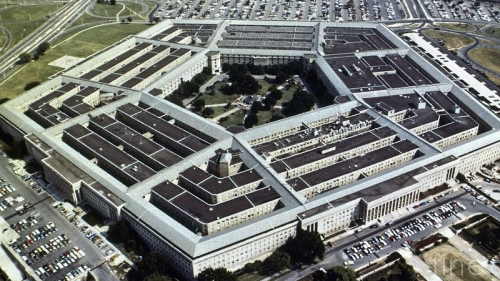
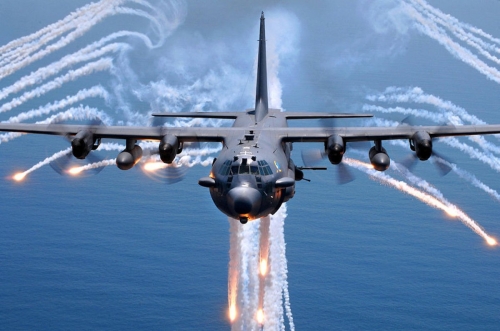

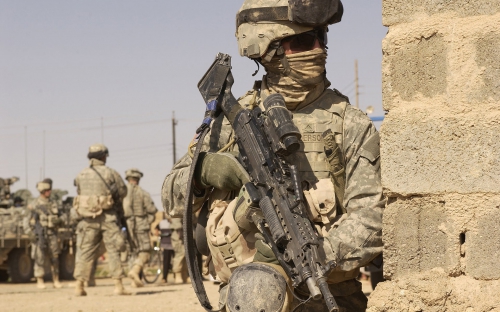
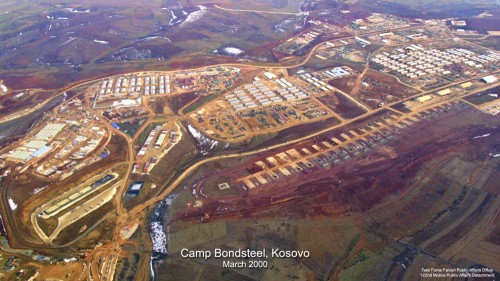
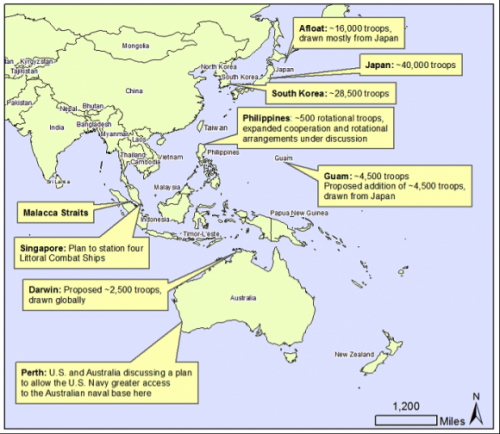
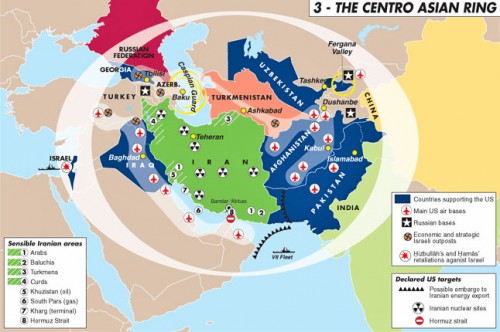
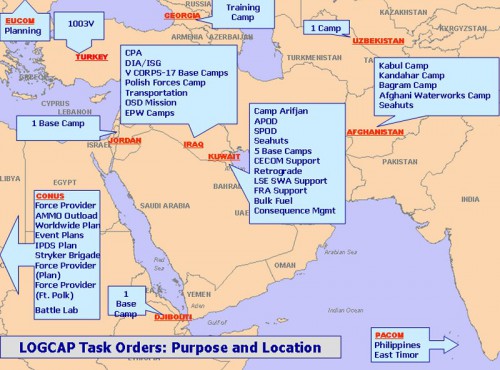


 En Allemagne, on dresse depuis 1986 des monuments aux déserteurs allemands de la seconde guerre mondiale. En Grande-Bretagne et aux Etats-Unis, personne, jusqu’il y a peu, ne voulait aborder cette thématique historique des déserteurs des armées de la coalition anti-hitlérienne. Charles Glass, ancien correspondant d’ABC pour le Moyen Orient, otage de milices chiites au Liban pendant 67 jours en 1987, vient d’innover en la matière: il a brisé ce tabou de l’histoire contemporaine, en racontant par le menu l’histoire des 50.000 militaires américains et des 100.000 militaires britanniques qui ont déserté leurs unités sur les théâtres d’opération d’Europe et d’Afrique du Nord. Le chiffre de 150.000 hommes est énorme: cela signifie qu’un soldat sur cent a abandonné illégalement son unité.
En Allemagne, on dresse depuis 1986 des monuments aux déserteurs allemands de la seconde guerre mondiale. En Grande-Bretagne et aux Etats-Unis, personne, jusqu’il y a peu, ne voulait aborder cette thématique historique des déserteurs des armées de la coalition anti-hitlérienne. Charles Glass, ancien correspondant d’ABC pour le Moyen Orient, otage de milices chiites au Liban pendant 67 jours en 1987, vient d’innover en la matière: il a brisé ce tabou de l’histoire contemporaine, en racontant par le menu l’histoire des 50.000 militaires américains et des 100.000 militaires britanniques qui ont déserté leurs unités sur les théâtres d’opération d’Europe et d’Afrique du Nord. Le chiffre de 150.000 hommes est énorme: cela signifie qu’un soldat sur cent a abandonné illégalement son unité. 